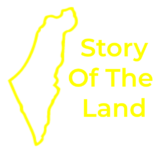welcome to
korazim
- The Gospels never mention that Jesus had visited this place. How could he condemn a city that He had never visited or taught in? Perhaps John 21:25 holds the answer.
- The archeological findings and structures at Korazim date from the early 3rd to 5th centuries. However, none of the findings belong to the first century. Was this the real location of Korazim where Jesus taught and later condemned it?
The Disciple John has answered our first question in the verse below. Korazim is located on the slope of the northern hill of Capernaum, just an hour’s walk from Capernaum to Korazim. Therefore he probably taught here, but it was not recorded in the Gospels.
How about the answer to the second question? Let’s find out by looking at the following photos and illustrations.
outside synagogue
This is the outside entrance of the synagogue. The remnant of this synagogue is built of basalt, which gives it a darker color. According to the Korazim National Park information, it was dated in early 4CE. The synagogue was not only for prayer and study of the Bible, but also for gatherings for social and court hearings.
inside synagogue
The entrance faced Jerusalem. In its northwestern corner, the wall of the synagogue rested on hewn bedrock. Benches lined the walls of the nave. The worshippers who sat on the benches, turned toward Jerusalem during prayer.
The south of the Synagogue has the most elaborately decorated part of the structure. It includes a plaza from which nine steps ascended to the synagogue’s three doorways. Twelve columns forming a U-shape supported the building’s second story. Some scholars believe that the purpose of the second story was to emit daylight.
seat of moses
This is a replica seat called the “Seat of Moses,” bearing an inscription in Aramaic which mentions a person named “Yudan, son of Yishmael”. He donated his wealth to the building of the synagogue. The seat is probably to honor the donor of the money.
pillar
A replica of a decorated pillar placed on two sides of the doors.
conch
An opulent conch shell decoration displayed in the synagogue.
gable
The largest doorway in the center featured a magnificent gable.
medusa
Medusa belongs to Greek mythology. The mythology mentions that whoever dared to look at her face was instantly turned to stone. It is very interesting that Medusa is carved in the Jewish synagogue. It seems Jewish arts and architecture were influenced by Hellenistic culture.
village
Besides a synagogue, the town of Korazim includes arched houses, dwellings, a ritual bath (mikveh), olive oil presses, a tomb, and some architectural items. This town covers an area of 24.7 acres.
oilpress
Three olive presses dated around the third to fifth centuries were found in Korazim.
A Crushing Stone
A crushing stone crushed the olives and then the oil flowed out from an outlet into the collecting vat.
the first century
From this picture, we can see an ancient road in the center top of this picture. Jesus definitely walked this trail back and forth, as it was the only ancient road from Capernaum to Korazim. It is about an hour walk. An archaeologist Achia Cohen-Tavor found something in this area in Korazim. When other archaeologists excavating this site thought they reached bedrock, Achia examined it. It was not bedrock. Instead they were giant boulders placed by ancient people over 2,000 years ago. So he lifted up these giant boulders and found pottery shreds like cooking pots, oil lamps, and coins which dated back to the first century during Jesus’ time. This discovery made new findings that, indeed, there is a first century synagogue built under the 4-5CE synagogue. I cannot wait to see the excavation of this first century synagogue when I go there again.
badger
What a lucky day that I have captured a badger in the picture! A badger is a small rabbit-like mammal that lives in rocks. They can be seen not only in Korazim but in other places in Israel. Even in biblical times, they were seen. The Tanakh mentions them several times, saying that Rock Badgers are considered unclean for consumption by the Israelites.
Proverbs 30:26 “The rock badgers are not a mighty people, yet they make their houses in the rocks;”
Psalms 104:18 “The high mountains are for the wild goats; the cliffs are a refuge for the rock hyrax(badger).
